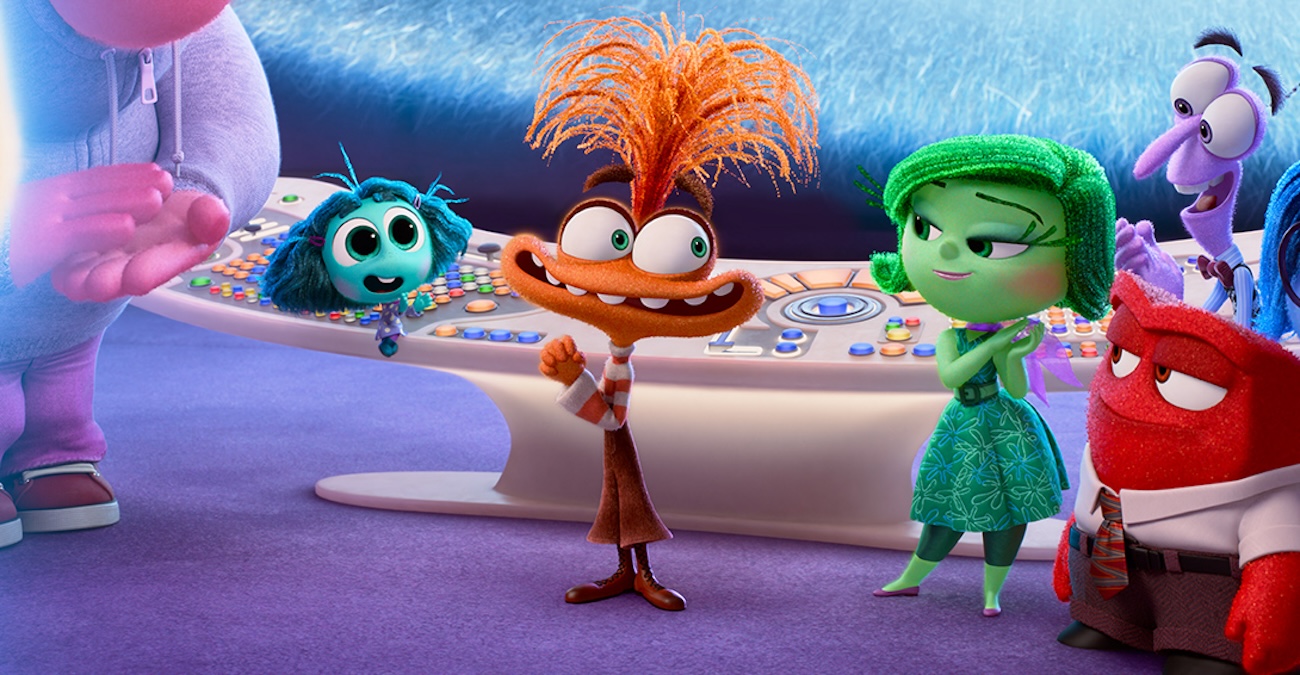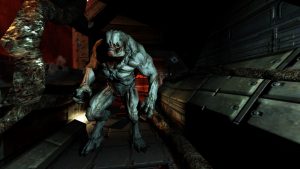
Change can often be as painful as it is inevitable. This is a fact of life and a fact that haunts Inside Out 2. The long anticipated sequel arrives nearly a decade after one of Pixar’s finest and most sophisticated films, making good on what previously was left as a looming menace and dark joke for the emotions of Riley—a sensitive girl who ended the 2015 film on the precipice of adolescence and all those fearsome feelings which come with it. “Riley’s 12, what could happen?” her emotions absently muse among themselves.
Yet the anxiety that so often accompanies change appears to be rattling around in the collective head (or boardrooms) of Pixar too. The studio which once looked invincible in the 2000s and 2010s has, in the nine years since Inside Out, seen its chief creative officer and co-founder resign in a cloud of #MeToo accusations and disgrace; a pandemic and parent company-mandated pivot to streaming that’s encouraged audiences to stay home; and a string of bold original films underperform at the box office. Even Pete Docter, the co-writer and director behind the first movie, has faded more into the periphery like Bing Bong due to new responsibilities with running Pixar following years of upheval.
As such, Inside Out 2 comes to us as a franchise film ostensibly preaching the need to embrace the future, even as it tightly clings to the past like a teenager wistful about, well, the Disney movies they loved growing up. Can such conditions really pull another rabbit out of the hat, as Pixar rather miraculously did thrice with the Toy Story sequels?
To be perfectly honest: not this time. For all its ambition and visual ingenuity, Inside Out 2 never once risks approaching the grace or emotional complexity of its predecessor, even as it adds a literal quartet of new emotions to Riley’s subconscious repertoire (assuming of course we can agree that feelings like ennui and nostalgia count as emotions as foundational as joy and sadness). With that said, a swing for the fences can still get you to first base, and Inside Out 2 provides Pixar with a safe feeling of comfort and familiarity; something any teen would welcome during their tumultuous wonder years.
Those awkward days are coming fast and furious when we catch up with Riley (Kensington Tallman) at the beginning of Inside Out 2. Already celebrating her 13th birthday as the film starts, there have been some titanic shifts in the young lady’s psychology off-screen. Her personality islands have been reordered, with the parents’ importance in her mind’s eye being wholly eclipsed by the massive spectacle that is friendship island; she also has a Mt. Rushmore of tween crushes; and these days playing hockey seems like the most important thing in the world.
That sounds just fine to the pint-sized anthropomorphic emotions ruling her mind: Joy (Amy Poehler), Disgust (Liza Lapira, replacing Mindy Kaling), Fear (Tony Hale, replacing Bill Hader), Anger (Lewis Black), and sweet, dear Sadness (Phyllis Smith). But that’s because Joy is still in control of a happy childhood. The day after Riley’s 13th, though, it all changes. At first amusingly so as an alarm called “Puberty” begins blaring in the middle of the night. But shortly afterward, new tenants show up in Joy’s control room—Envy (Ayo Edebiri), Ennui (Adèle Exarchopoulos), Embarrassment (Paul Walter Hauser), and most troublingly Anxiety (Maya Hawke).
It’s awkward enough to squeeze in all the new roommates upstairs (they even order one attempted squatter, an elderly and senile thing called “Nostalgia,” to not come back until Riley is old enough to be a bridesmaid). But after their young ward goes away to hockey camp for the weekend, only to discover her middle school besties have been assigned to a different high school, and, worse, that this trip might determine whether Riley even gets on her new school’s hockey team, it’s as if Anxiety has completely taken over the wheel. Or as Hawke’s controlling emotion explains it, this weekend will determine if Riley “has friends for the next four years or dies alone!” Suddenly, our girl is on an emotional rollercoaster, and there’s no longer room for feelings like Joy in the front seat.
Taking over directing duties, and working from a script she co-wrote with Meg LeFauve and Dave Holstein, Kelsey Mann is bold in framing the entire sequel as a metaphor for an emotion that has become a focal point of concern for children these days. In essence, Inside Out 2 is a film designed to explain on a universal level what a panic attack is and how to cope with deep anxiety. And when it comes to tackling that real disorder in the film’s back half, Inside Out 2 finds traces of the gravitas which radiated throughout the first picture.
However, much else of Inside Out 2 is unable to recapture that same disarming ingenuity. Whereas the first film seemed novel in its concept of Joy and Sadness becoming unlikely friends while facing what was also essentially a child’s anxiety attack about moving out of the only home she’s ever known, Inside Out 2 seems more content at leaning time and again on the comfort that comes with familiarity.
This stems partially from the film reusing the same storytelling structure of the last movie, albeit all of the emotions from the first film are now exiled outside of Riley’s mental HQ. But it’s also borne from the humor and pathos likewise leaning heavy on pleasant, nod-inducing recognizability. The reason Bing Bong (Richard Kind) struck such a nerve with kids and parents alike in 2015 is they saw their own faded childhood memories of an imaginary friend—or just the basic innocence of that time in their life—represented in the idea of this half-forgotten translucent ghost.
Conversely, most of Inside Out 2 is about serving up references that jolt your real-life dopamine glands, be it Joy and company coming across two-dimensional children’s educational programming in the back recesses of Riley’s mind, or a video game character who is not, not Link from Super Smash Bros. There are many other such “easter eggs” and winking referential gags, and none of it matches the bittersweet poignancy of seeing Joy ice skate alongside halcyon-colored memories of Riley’s toddler days.
The series’ overall metaphor is thus rendered more basic. At one point, our heroes even come across a “stream of consciousness” where the emotions can ride whatever is on Riley’s mind at that moment. The movie, too, has the shagginess of a collection of cultural and childhood signposts floating down a one-way current.
This is in no way to say Inside Out 2 is not a cute, effective, and at times beautifully made animated experience. Pixar’s technical prowess seems to only ever increase in leaps and bounds from year to year, and the candy-colored visual wonderland Inside Out 2 makes of the memories which define Riley’s sense of self is a delight to behold. The film also does have slightly more adult, sophisticated winks to the parents, such as its depiction of Anxiety working the rest of Riley’s emotions like indentured animators in a studio with no self-respect.
Also how the film ultimately handles Anxiety during its third act, while obvious, is no less emotionally sincere. It will serve as a wonderful way for families to discuss difficult and abstract feelings. It just might not leave the parents in tears this time. Still, that’s not a wholly bad thing. Expecting the future to always rekindle rose-tinted memories of the past invites emotional stagnation—or that old-timer “Nostalgia” taking full control of the command center. She’s definitely in the room these days at Pixar, but neither they nor this franchise has fallen into arrested development just yet.
Inside Out 2 is in theaters on June 14. Learn more about Den of Geek’s review process and why you can trust our recommendations here.
The post Inside Out 2 Review: Pixar Might Need a Hug appeared first on Den of Geek.




